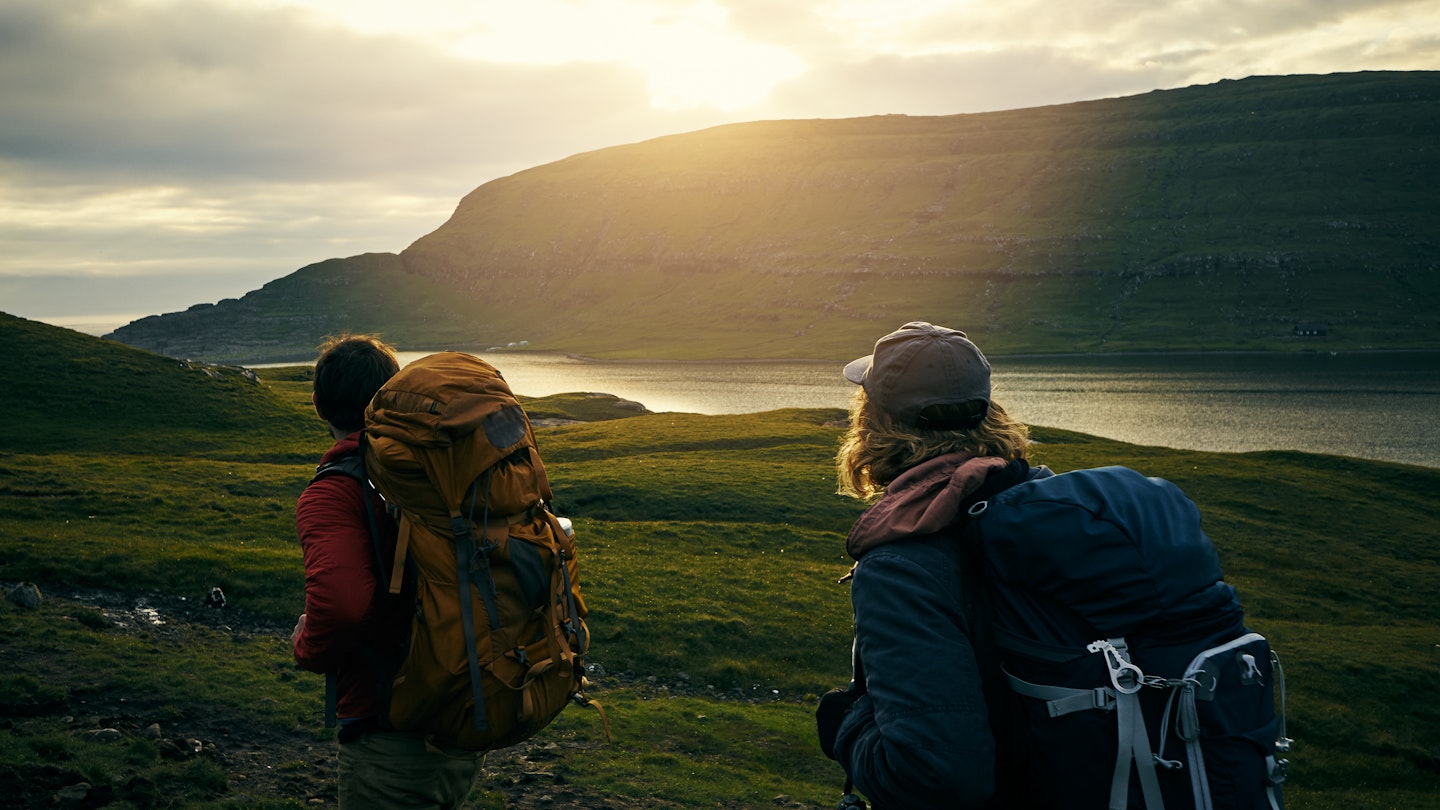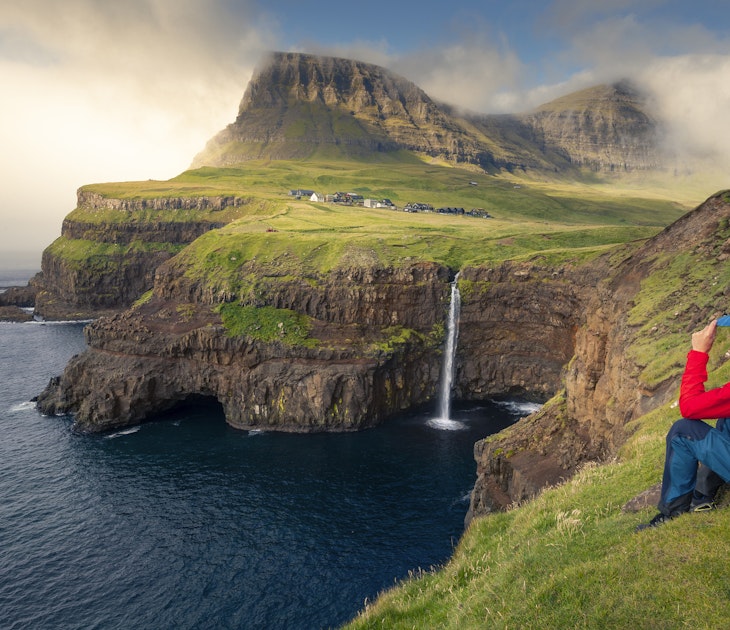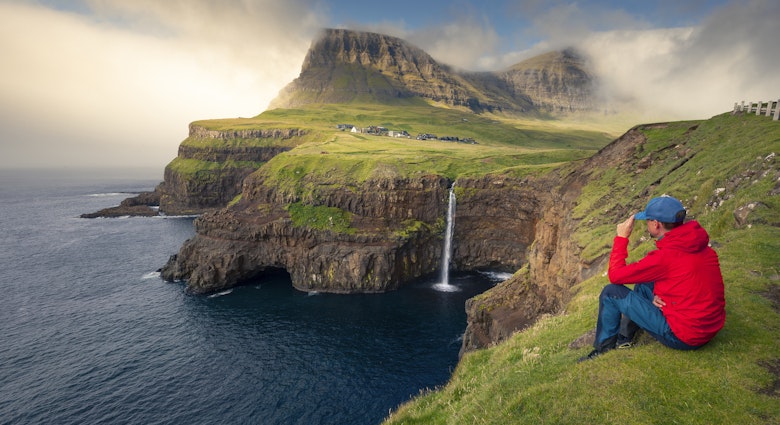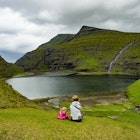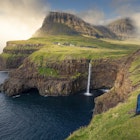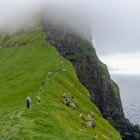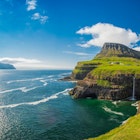Certain things will make your jaw drop when you arrive in the Faroe Islands: the mountains, the sea view, and the cost of everything. It turns out that being located in the middle of the North Atlantic – where most things have to be imported – has a price, and that price is in Danish Krone, the islands’ official currency. The good news is that we have some ideas on how to keep your budget manageable.
Recent years have drawn a high number of tourists to this otherwise off the beaten track location, and their presence has had an impact. Farmers have started to add fees to hiking routes that run through their land, arguing that if visitors step off the path, they’re not just causing damage that they have to pay to fix, they’re also walking on the grass their sheep graze, costing them even more. So while you might be shocked to pay for a walk in nature here, there is a reason behind it. At the time of writing, there’s a debate going on about replacing this fee system with a straightforward tourist tax, which might be easier to work with.
Not that the Faroe Islanders are hostile to tourists – that’s not the case at all. As their groundbreaking sustainability programme, Closed for Maintenance, shows, they open their arms and homes to visitors who can help develop a better kind of tourism with them.
Look out in particular for unexpected transport costs. Car rental is reasonable and so is fuel; what you’ll add on top is a fee for every undersea tunnel you drive through, and any ferry you need to take, so take care when planning your routes to manage these extra expenses.

Daily Costs
All prices are in Danish Krone.
(For reference: 100 kr = £11.50, €13.50 and $14.50)
- Hostel room: 190 kr
- Basic room for two: 900 kr
- Self-catering apartment (including Airbnb): 500-2500 kr
- Public transport ticket: 125 kr / day (based on a 4-day pass at 500 kr)
- Coffee: 30 kr
- Sandwich: 55 kr
- Dinner for two: 750-900 kr
- Beer/pint at the bar: 55 kr
- Car rental: from 250 kr / day
- Hiking trail fee: 100-500 kr. Note that more expensive trails generally include a guide.
- Tunnel toll (return): 100-450 kr
Average daily cost per person: from 2000 kr
Book in advance, and focus on the off-season
This is classic advice for anyone wanting to travel anywhere on a budget, but it's particularly relevant for this island group, where accommodation is limited and there’s a real chance you could arrive and find sky high prices, nowhere to stay and no car to rent if you don’t plan ahead. It’s not unusual for popular rental properties to be booked out a year in advance. Prices drop for shoulder season, and the cheapest time to travel is October-April. Of course, these months may be less reliable weather-wise for hikers and wildlife spotters.
Avoid July and August if you want to save money
Prices come to a head in July and August, and peak on 28-29 July around Faroese National Day, in Tórshavn in particular. In this part of Europe, school summer holidays tend to be in the month of July, which can affect flight prices. Again, the best thing to do is plan ahead of time and book at least three months in advance.
Travel as a group
Pooling resources by traveling as a group is a good way to go. If you can split car rental, fuel, tunnel costs and a rental apartment or cottage in four, you’ll save a lot.
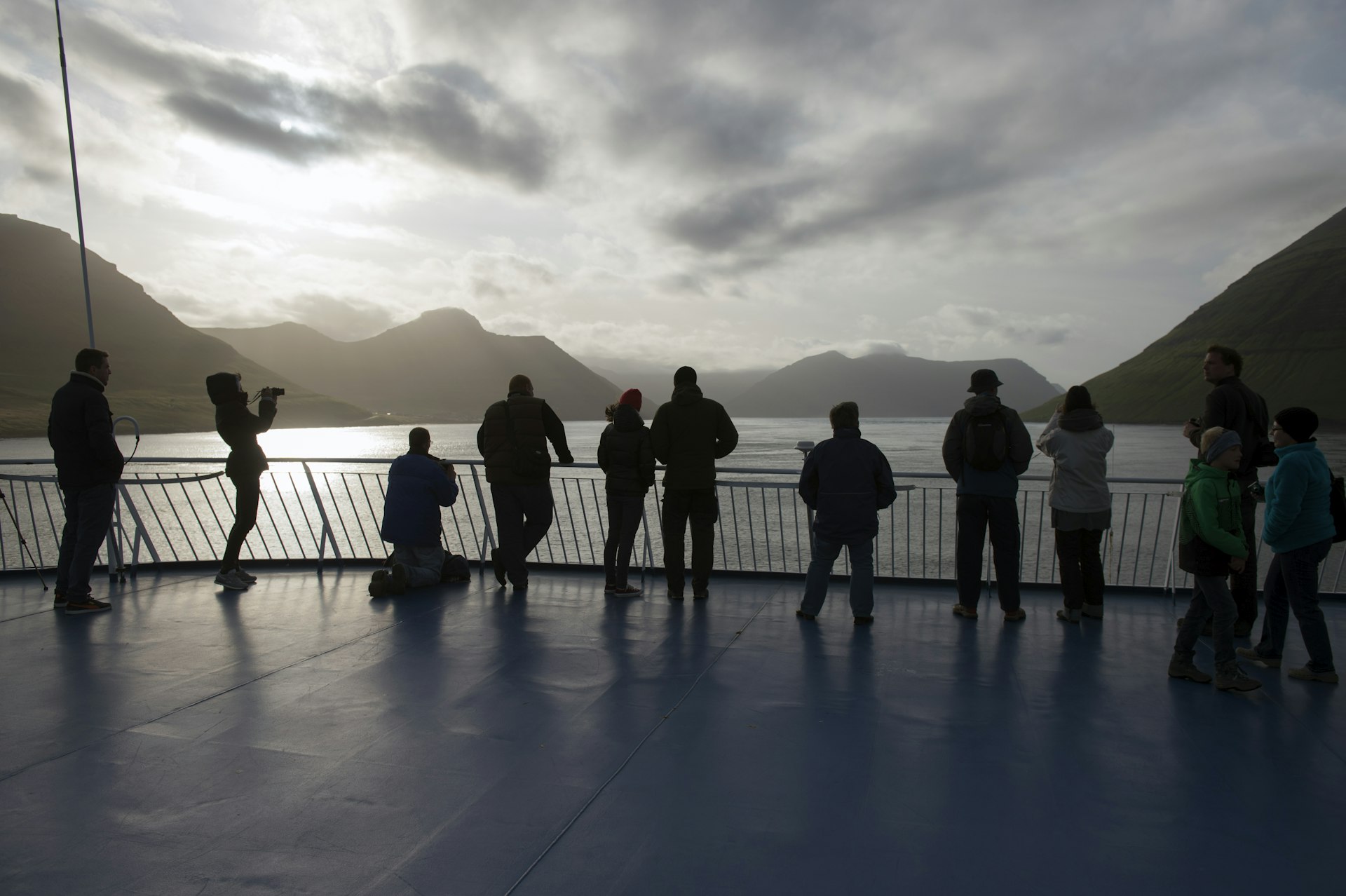
Take the ferry
Some Northern Europeans opt to bring a campervan and sail to the Faroe Islands via Denmark on Smyril Line ferries. This, if nothing else, saves on accommodation; you can also bring plenty of food from home with you. Ferry fees add up, though, and you need to drive to Hirtshals in the north of Denmark to catch the boat, so some extra costs do make their way into the equation.
Take a self-catering option
Pack a thermos in your luggage, book a rental cottage with a kitchen and shop at a local supermarket (Bónus is the cheapest). If you’re really tight on funds, you can also bring food with you. That way, you can skip the high grocery prices.
Consider camping to cut accommodation costs
You will probably still need to hire a car, and you’ll need to bring plenty of kit with you, but camping is a budget friendly way to travel once you're on the ground. Rates in local campsites start at around 100 kr per night, and many of them are in scenic locations, meaning you’ll wake up with views of islands, mountains and the sea. Of course, camping is weather dependent and not a great idea in winter.
Another cost-saving tip: look for somewhere to stay outside Tórshavn. The capital city has the biggest variety of places to stay, but prices tend to be cheaper elsewhere.
Reduce your transport costs by planning and thinking small
The good news is that you don’t need a four-wheel-drive to navigate the roads on the Faroe Islands. Some roads may look a little rustic, but you won’t be driving off-road at any point. It’s always cheaper to rent a smaller car, and it’s absolutely possible to manage a trip there with one. Another money-saver in terms of driving? Planning your route carefully. With a 100 kr toll for most undersea tunnels, plus 450 kr for the undersea roundabout, finding a route that reduces the number of unnecessary tunnels you traverse saves money.
The cheapest way to get around is by bus
If you have plenty of time and patience (plus the right clothes for standing at a windy and often rainy stop), the country’s public transport option could be for you. Students get 20% off as well. Even if you don’t plan to travel across all the islands by bus, it’s worth noting that all the red buses within Tórshavn itself are free. Elsewhere, a 500 kr public transport card gives you four days of public transport across the islands including bus and ferry travel, with discounted rates for kids; you can also buy seven days for 700 kr. The deal offers good value as the bus from Tórshavn to Gásadalur costs around 350 kr on its own; the card can be bought on buses and in ferry terminals across the country.
Some transport options like helicopter trips to remote islands are subsidized and appear cheap, but it’s important to realize that they are primarily for local use as a way to keep people connected.
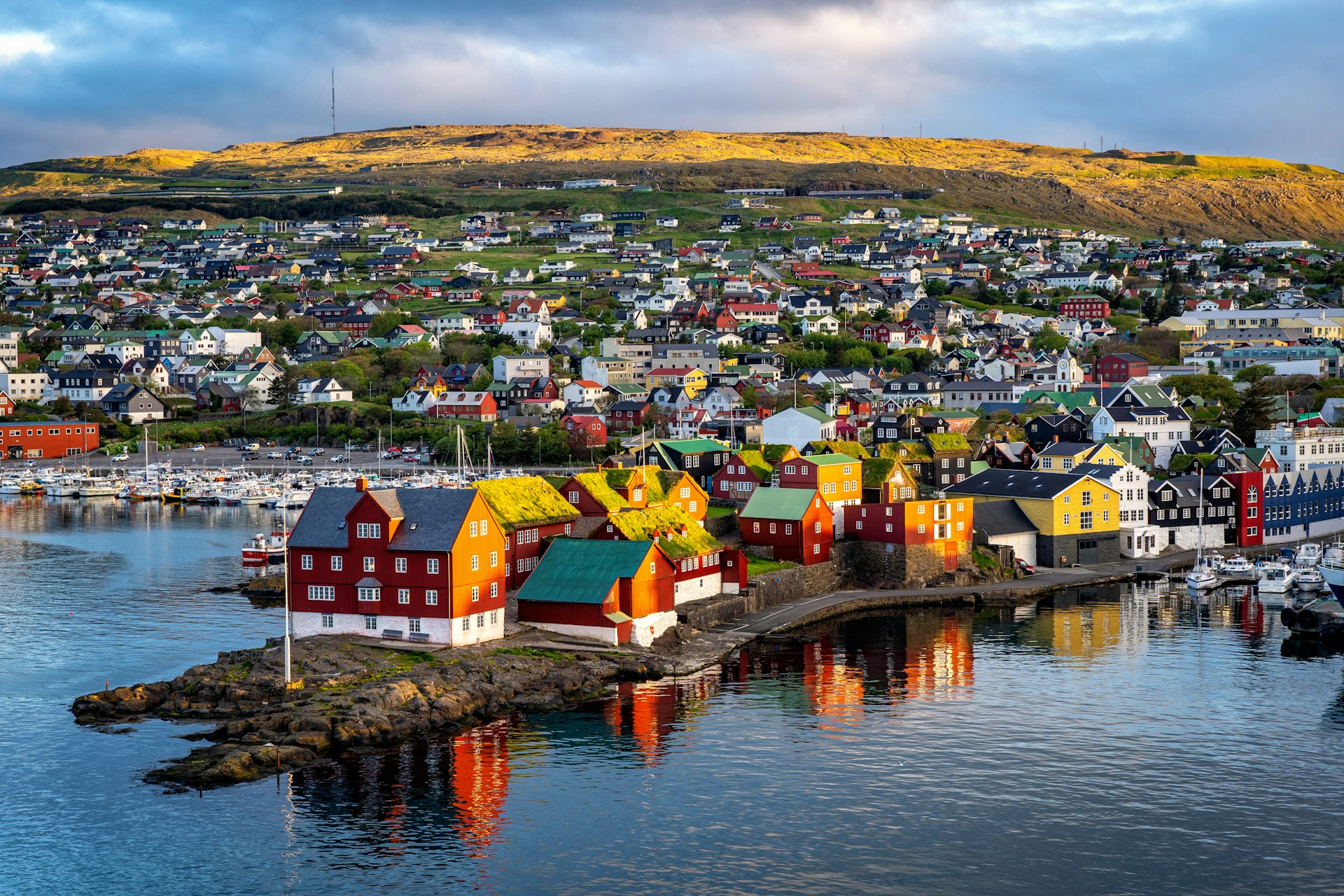
Where to find good, cheap eats
The best bet for eating out on the cheap is to go to Tórshavn, where you’ll find a variety of options in terms of cafes, pubs and different price points. Other locations in the islands can be more hit and miss. In particular, look out for fish and chip options, which can fill you up from around 100 kr with locally caught fish.
How to travel the Faroe Islands for almost free
Every year the Faroe Islands run a special weekend called Closed for Maintenance. This unique tourism initiative invites around 100 volunteers to join them for a weekend of trail-building, sign-fixing and voluntourism. Flights are subsidized and board and lodgings are provided, making it a great value option if – and it’s a big if – you get a place on the heavily oversubscribed scheme. Registration usually opens in September each year.

